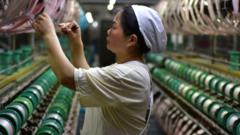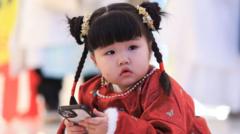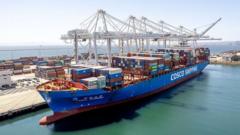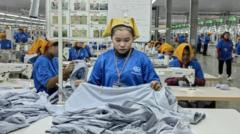Chinese factories, already feeling the heat from tariffs instituted in Trump's first term, prepare for potential new trade barriers that could reshape their operations.
Trump's Tariffs Loom Large as Chinese Factories Brace for New Challenges
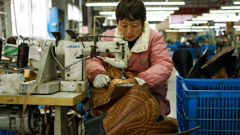
Trump's Tariffs Loom Large as Chinese Factories Brace for New Challenges
As Trump announces potential tariffs, China's manufacturing sector faces a wave of uncertainty and adaptation.
The factory floor in Jiangsu, China is alive with the sounds of creation as workers stitch together cowboy boots, emblematic of American heritage. Yet uncertainty hangs in the air for Mr. Peng and his colleagues, reminiscing over peak production days of a million pairs sold annually. The resurgence of Donald Trump, now back in the presidential seat, stirs anxiety and apprehension within the manufacturing landscape, as another trade war looms on the horizon.
With a history of imposing tariffs during his last presidency, Trump has returned with promises of strict import levies on products from China, eyeing a potential 10% tariff set to take effect on February 1st. As industries grapple with sluggish growth and export dependency, the specter of renewed tariffs looms large, creating disarray among businesses reliant on U.S. markets.
As major companies consider relocating operations to other countries, evidence of factory exodus grows, with brands like Nike renegotiating their supply chains in favor of lower-cost alternatives in Southeast Asia. Losses are palpable at Mr. Peng's factory, which has seen its workforce shrink from over 500 to a mere 200 due to order reductions from U.S. buyers wary of the impending tariffs. The experienced workers, deeply embedded in their roles, face an uncertain future just as Mr. Peng expresses his commitment to their welfare.
The potential tariffs threaten to escalate costs, prompting discussions around relocating production lines. Factory managers like Mr. Peng face tough choices: move and save costs while sacrificing the loyalty of long-serving employees or absorb increased operational costs, risking long-term profitability. The cuts have already impacted local communities with dwindling job security, leaving many workers in distress.
In Cambodia, the shift of power dynamics reveals how Chinese businesses are preemptively adapting to the evolving landscape. Eco-friendly apparel manufacturing has surged, with Chinese-run factories catering to demands from U.S. giants like Walmart seeking affordable prices. But rising tariffs threaten these arrangements, amplifying the challenges as suppliers navigate cost variances in a market under strain from potential tariff hikes.
At the same time, China is making efforts to hedge risks by strengthening ties with countries in Southeast Asia through substantial investments, anticipated under the Belt and Road Initiative. This strategy aims to establish China as a pivotal global player while boosting trade partnerships, in response to the repercussions of fluctuating U.S.-China relations.
While fears of a trade war interact with the complexities of international economics, cautious optimism remains within factories. Local producers and stakeholders like Mr. Peng hope for negotiations that could alleviate tensions and reach a compromise beneficial for both sides. As the situation evolves, the lessons from previous tariffs continue to resonate across space, forcing industries to remain agile and recalibrate in anticipation of the changes on the horizon.


